The family-run estate is known for its combination of classic methods, creativity and experimentation, and the intuition of third-generation owner Manlio Collavini.
He’s the one credited with bringing Friuli wines to international markets, and producing a new-style Pinot Grigio fermented off skins. At the time in Friuli, Pinot Grigio was produced in a coppery-coloured version and sold in dark green Alsace bottles, because local viticulture was influenced by the Austrian school. To show the pale and bright colour of his wine, Manlio put it in transparent Bordeaux bottles. Seeing his success, other wine producers followed suit.

In 1971, he expanded in a new direction – using Pinot Grigio grapes to create a trendsetting sparkling wine called Il Grigio.
He followed this success, at the end of the Seventies, with probably his biggest success and proof of his amazing business intuition – another sparkling wine, this time from an ancient native Friuli variety, Ribolla Gialla. At the time, Ribolla Gialla was a rarity but he decided to allocate 4.5ha of his family-owned vineyards to it and vinified the grapes to produce bubbles. The result is a Ribolla Gialla Brut, now obtained by integrating the advantages of the classic method and the Martinotti-Charmat process.
Luigi Collavini, one of Manlio’s sons, explains: “Il Grigio Sparkling was our first sparkling wine, born 50 years ago from my father’s belief that Friuli could be a great place to make sparkling wines. It is a cuvée of 40% Pinot Grigio and 60% Chardonnay produced with the Martinotti-Charmat method in vertical stainless-steel vats, resting on yeasts for six months.
“His love for the Ribolla Gialla spurred him to challenge himself in the production of a sparkling wine made with this grape: we are now very proud to have been the first ones to make a Ribolla Gialla sparkling wine, with a method that became known as the Collavini Method.
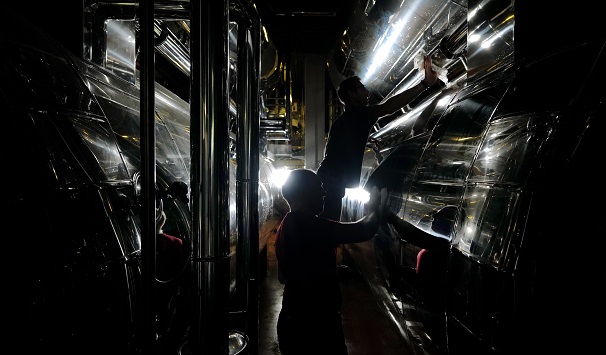
“Making a sparkling wine out of this grape was not an easy process, and no one tried anything like this before. At the beginning he tried using the Martinotti-Charmat method, but the process did not give the desired results. So, he started thinking about transferring the concepts of the classic or Champenois way to the Martinotti-Charmat method, while keeping the advantages of both.
“He tried laying down the autoclaves in a horizontal position to have the widest possible wine surface in contact with yeasts and prolonged the fermentation time. The first cuvée rested on yeasts for nine months: the results were amazing. The rest on the yeasts then became longer year after year, arriving to today’s 30 months or more.”
The extended refining process is completed by at least 12 months in the bottle.
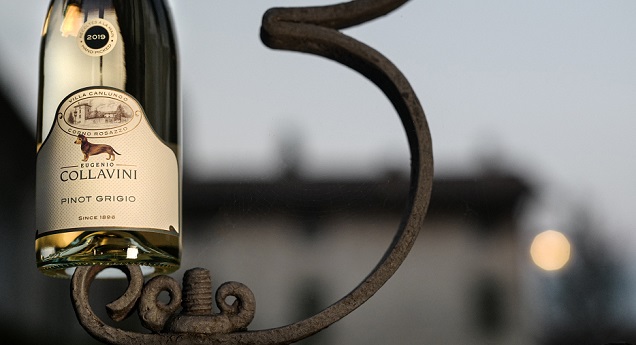
Another of Manlio’s pioneering moves was to add the image of his first dachshund, called Ribolla, to the label of his Pinot Grigio long before creatures on labels became a trend. Initially his idea was greeted with scepticism, but then customers started asking for the “dachshund wine”; the symbol had increased the originality of the product, facilitated its recognition and given the wine a greater identity. Soon, the Dachshund took his place on the company logo.
The Collavini story didn’t begin with Manlio, however. It began in 1896 in Rivignano, where company founder Eugenio Collavini supplied wine to stores and noble families in Udine. Eugenio’s son, Giovanni, led the winery through the two world wars. The baton then passed to Giovanni’s son, Manlio, who was born in 1937. Upon taking over the winery, Manlio moved the company to the most suitable terroirs of Corno di Rosazzo, where he acquired a gorgeous 16th-century fortified residence, the Villa Zucco-Cuccagna, which now houses a shop and a restaurant, the Osteria della Ribolla.
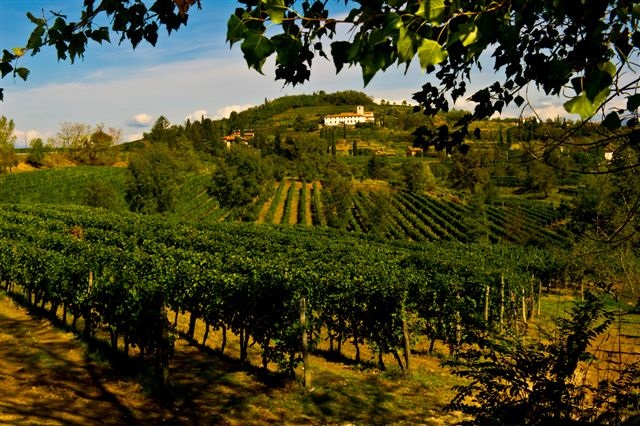
Manlio also added another 11ha of Ribolla Gialla. Today, the company manages 170ha of vines and produces about 1.5 million bottles annually, of which 200,000 are Ribolla Gialla. About half of all the wines produced are exported, going to more than 50 markets around the globe.
Despite this incredible success, Collavini remains a family-owned company and continues to be managed by Manlio (centre) and his sons Giovanni (right) and Luigi (left).
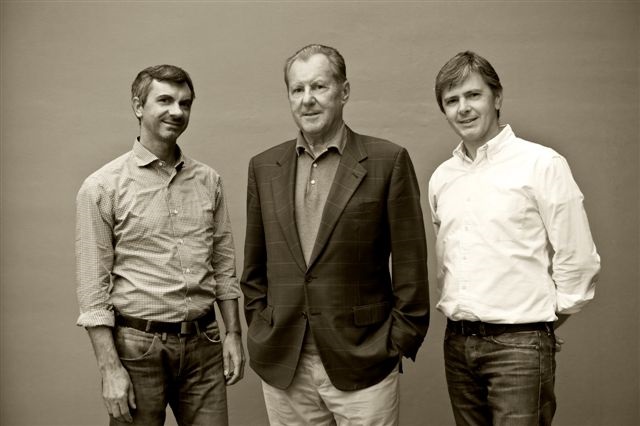
To discover some of the current creativity at Collavini, Canopy sat in on a tasting with Luigi, vice-president of sales. Here are the two tidbits that we thought were most intriguing...
Ribolla Gialla could be the new Pinot Grigio
Collavini’s vineyards are in the eastern Collio and Colli Orientali del Friuli appellations that border Slovenia, where substantial temperature variations from day to night during the growing season promote both ripeness and acid development in the grapes.It's a region known for its white wines and Collavini is still a major producer of Pinot Grigio. But, during the tasting, Luigi (pictured below with Ribolla grapes) showed two different styles of Ribolla Gialla, which he calls “the gem of Friuli”.
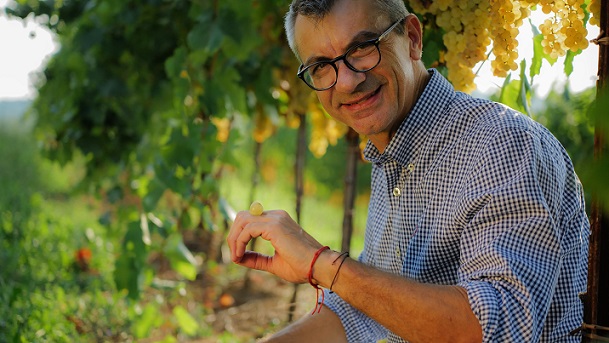
Luigi says his father believes in the potential of Ribolla Gialla “to take over the big markets like Pinot Grigio did because it has the same style, the same softness, the same elegance, the same balance, and the same drinkability”.
As we tasted the “easy, fresh, immediate” Ribolla Gialla Benedete IGT Venezia Giulia 2022, from Friuli’s flatlands, Luigi says: “This Ribolla Gialla can be the new Pinot Grigio as a style, as a name.”
The grapes, harvested in the second half of September, were left to macerate for six hours at 13°C before fermentation in tanks at a controlled temperature of 15°C. Fermentation lasts about 15 days while the maturation period, still in steel, continues until the following spring.
Adding complexity by partial drying
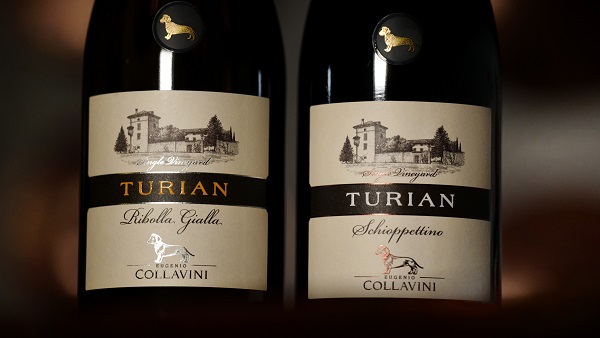
Collavini prides itself on producing clean, modern wines that echo the traditions and grape varieties native to this special region in the extreme northeast of the Italian peninsula, between the Julian Alps and Adriatic Sea.
As well as a Friulano (T Friulano) and the Ribolla Gialla Benedete that undergo classic vinifications, with soft pressing followed by fermentation and ageing in stainless-steel tanks, there are also a few wines that get boosted complexity from partial drying of the grapes.
Turian Ribolla Gialla Colli Orientali del Friuli Doc (above) is crafted from Ribolla Gialla grapes that have been picked in the historic vineyard of Clò Turian, the most ancient vineyard in the estate. The harvest is followed by a light drying (15 days) before the grapes undergo a classical vinification as a white wine with overnight maceration in the press at 12°C and maturation until the following summer solely in steel.
Broy Collio Doc is a Collio Bianco blend of three varieties, where the Friulano (50%) and Chardonnay (30%) grapes are partially dried in the fruttaia to concentrate the juices. The remaining Sauvignon Blanc grapes (20%) are pressed separately and chilled to block fermentation while gaining from a little skin contact. The musts of all three varietals are then blended and fermented partly in steel and partly in barriques and tonneaux.
Collavini started producing this wine in 2003. Luigi says: “The idea was to make a big, important white of Friuli to show the potentiality of the area.”
Maturation on fine lees continues until the spring of the second year after the harvest. Finally, the wine goes into bottle at the beginning of summer.
When they started producing this wine, the must was fermented in barrels. “We discontinued barrel-fermentation from 2008 to 2018,” Luigi explains.
“In 2018 we reintroduced the use of barrels because we found a very nice cooperation with a barrel producer from Burgundy. He came over, we tased different vintages of Broy and we had a very deep and long study on what we should actually use to make the Broy age better but at the same time not overpower the wine with wood.
“We like the wood but you also have to respect the grape and the taste of wine.”
Turian Schioppettino Colli Orientali del Friuli Doc is made from handpicked Schioppettino grapes that are collected in trays and spread out over mats in the fruttaia to enhance their flavours and body. This is followed by destemming and fermentation on the skins for about three weeks. For the following 18 months, the wine is fined in Allier French oak barriques.
Another red wine benefitting from partial drying is Forresco DOC Friuli Colli Orientali, a blend of Refosco dal Peduncolo Rosso (40%), Refosco di Faedis (40%), and Pignolo (20%). The ripe grapes are picked in trays and placed in the drying loft for 20 days to concentrate their aroma compounds and flavours. Then they are destemmed and macerated on the skins for about three weeks in temperature-controlled automatic fermentation tanks.
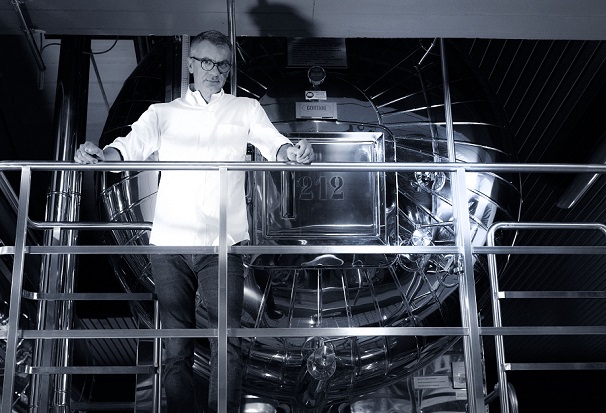
As the tasting nears the end, Luigi makes a couple more interesting points:
- Collavini’s winemaking is guided by three principles. He says: “The wine has to taste like the grape, you have to taste the terroir of Friuli, and you have to taste also the style of my family. So, we always try to reach for balance, elegance and smoothness. We don’t want to have wines which shock the palate; we want wines that are very pleasant to drink. This is always our idea when we make wine.”
- Luigi (above) also believes in vintage variation. He says: “I don’t like the standard wines which are all the same vintage after vintage. I love the wines which are different from vintage to vintage. We have to understand and we have to respect the fact that the climate changes year after year.”


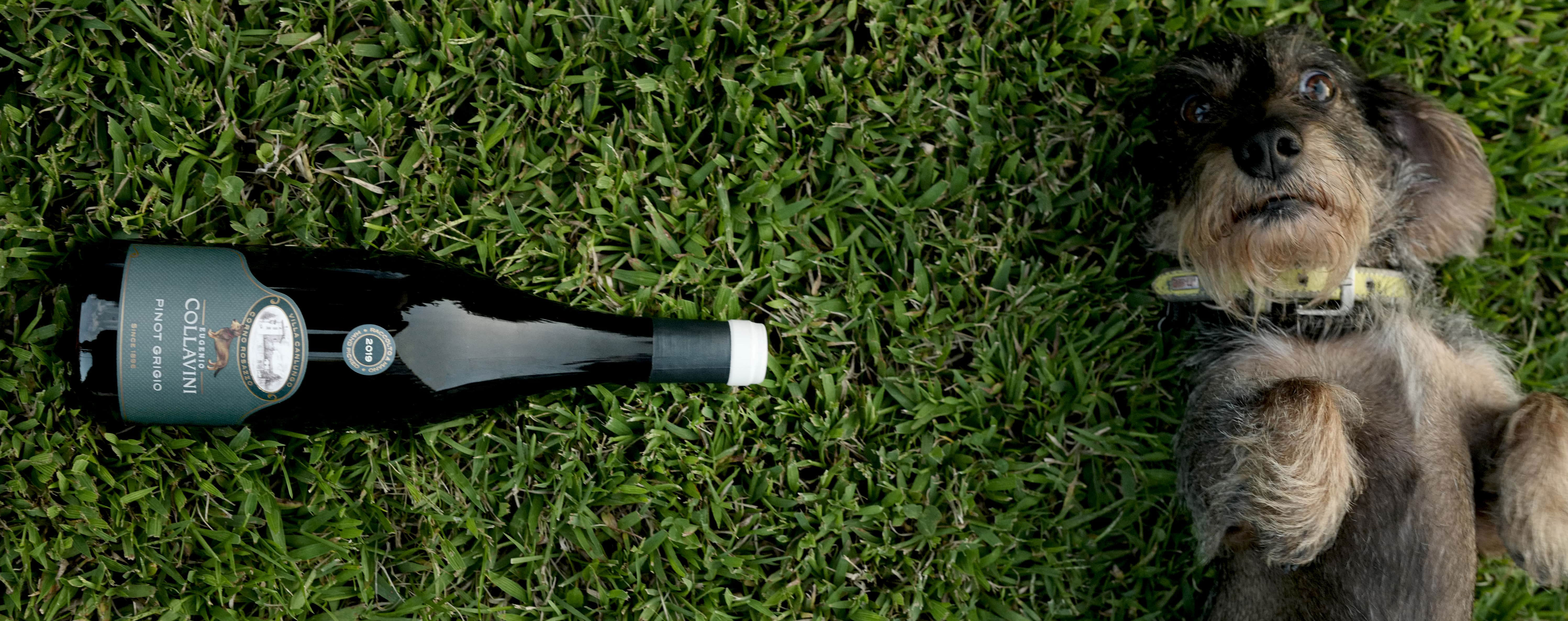










.png)






